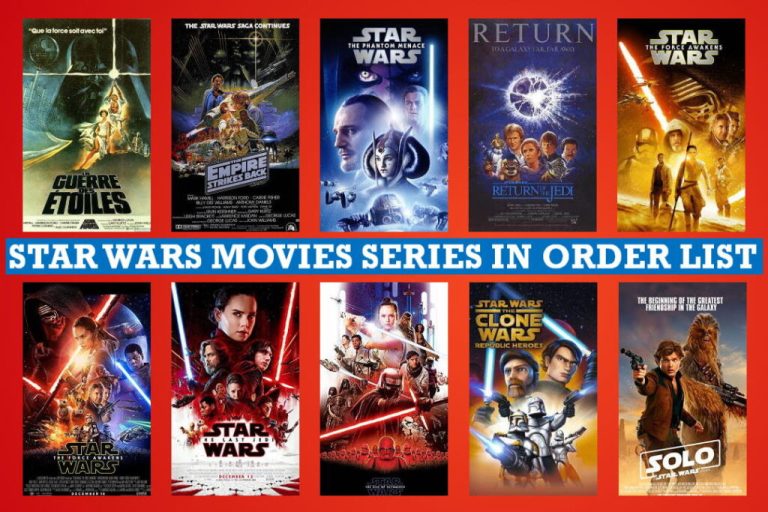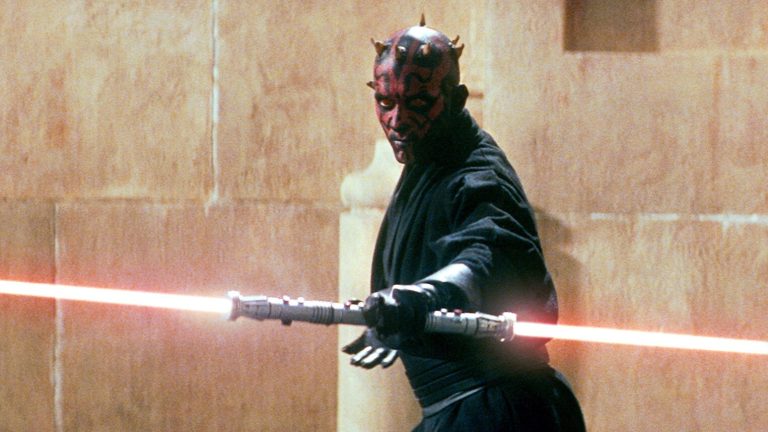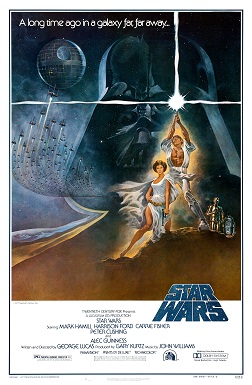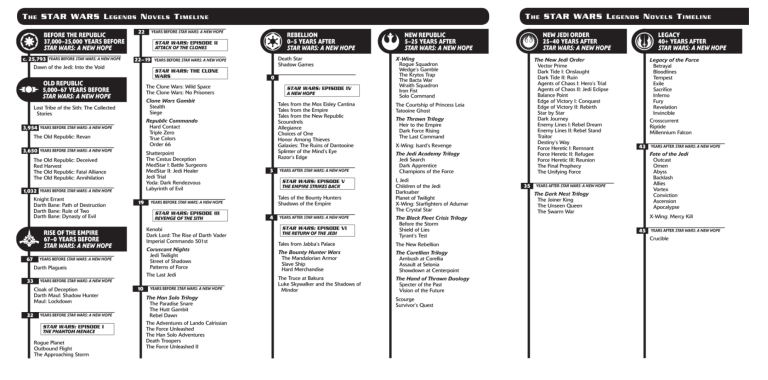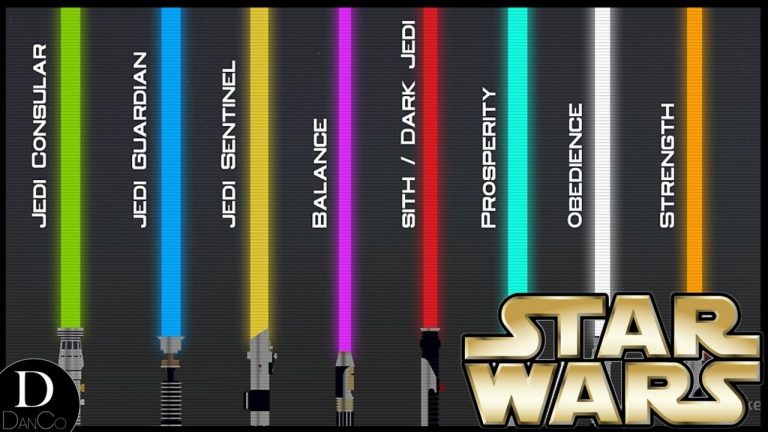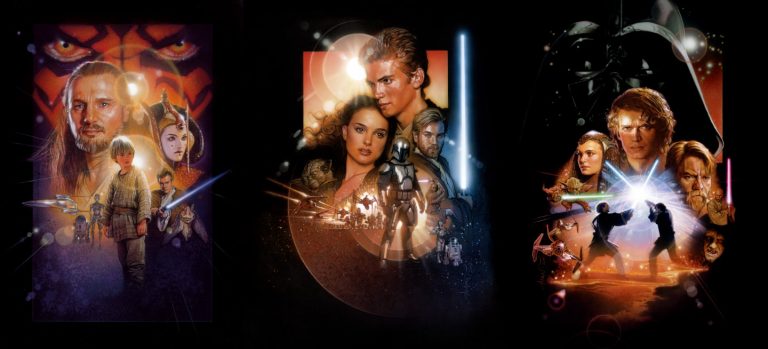What Order Should You Watch The Star Wars Movies In?
Hey there, fellow Star Wars fanatics! So, you’re ready to embark on an epic journey through the galaxy far, far away, but you’re wondering, “What order should you watch the Star Wars movies in?” Well, fear not, because I’ve got you covered. In this article, we’ll delve into the different viewing orders and help you decide which one suits you best. So, grab your lightsaber, hop into your X-wing, and let’s dive into the Star Wars universe together!
Now, before we dive into the various viewing orders, let’s take a step back and appreciate the cultural phenomenon that is Star Wars. From the iconic characters like Luke Skywalker, Darth Vader, and Princess Leia, to the thrilling lightsaber duels and epic space battles, the Star Wars saga has captured the hearts and imaginations of fans worldwide. With multiple trilogies, standalone films, and TV series, it can be a bit overwhelming to figure out where to start. But fear not, my friends, as I’m here to guide you through the galaxy and help you choose the perfect order to experience the saga in all its glory. So, strap yourselves in and get ready for an adventure of a lifetime!
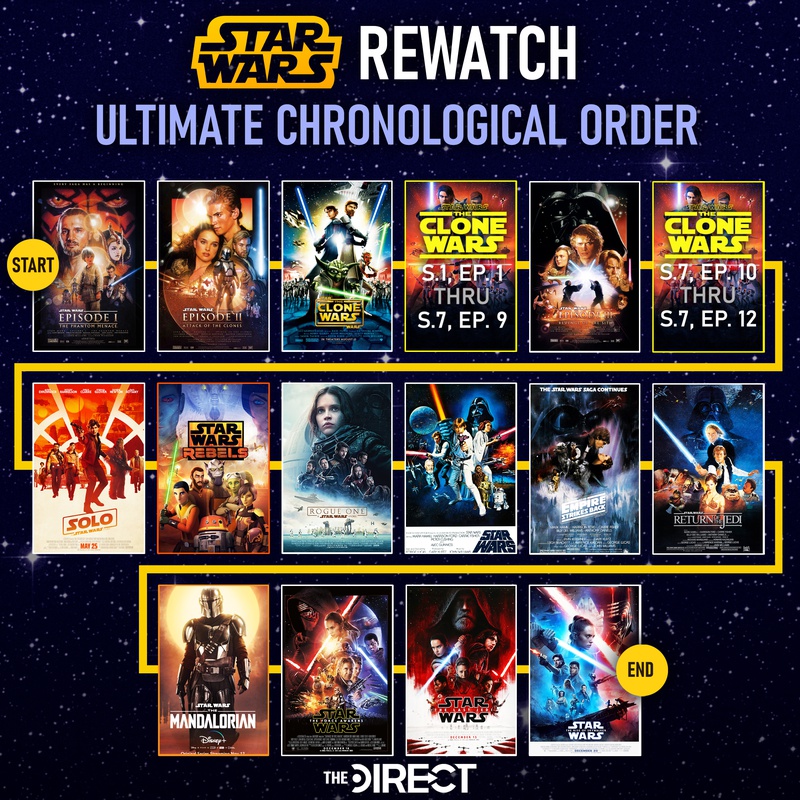
What Order Should You Watch the Star Wars Movies In?
If you’re a fan of the iconic Star Wars franchise and want to embark on a movie marathon, you may find yourself wondering what order you should watch the films in. With multiple trilogies, spin-offs, and standalone movies, it can be a bit confusing to determine the best viewing sequence. In this article, we will break down the different options and help you decide which order is right for you.
1. Release Order: A Classic Approach
The release order is the most straightforward way to experience the Star Wars saga. This means starting with the original trilogy, beginning with “Star Wars: Episode IV – A New Hope” (1977), followed by “Episode V – The Empire Strikes Back” (1980), and concluding with “Episode VI – Return of the Jedi” (1983). Afterward, you can dive into the prequel trilogy, starting with “Episode I – The Phantom Menace” (1999), followed by “Episode II – Attack of the Clones” (2002), and concluding with “Episode III – Revenge of the Sith” (2005). Finally, you can watch the sequel trilogy, which includes “Episode VII – The Force Awakens” (2015), “Episode VIII – The Last Jedi” (2017), and “Episode IX – The Rise of Skywalker” (2019).
By following the release order, you get to experience the story as it unfolded for audiences over the years. You’ll witness the original trilogy that captivated millions, travel back in time to the origins of the Jedi and Sith in the prequels, and see how the story evolves in the sequel trilogy. This order allows you to appreciate the visual effects advancements and storytelling techniques as the franchise developed. Plus, it keeps the surprises and plot twists in their intended order.
However, one disadvantage of the release order is that it can be jarring to jump between different trilogies. The prequels, for example, were made after the original trilogy but take place before it chronologically. This means you’ll witness the rise and fall of Anakin Skywalker before learning about his legacy as Darth Vader. Some viewers find this narrative structure a bit disjointed and prefer a different approach.
2. Chronological Order: A Linear Journey
If you prefer a more chronological approach, you can watch the Star Wars movies in the order they occur within the story. This means starting with the prequel trilogy, beginning with “Episode I – The Phantom Menace,” followed by “Episode II – Attack of the Clones,” and concluding with “Episode III – Revenge of the Sith.” Afterward, you can move on to the original trilogy, starting with “Episode IV – A New Hope,” followed by “Episode V – The Empire Strikes Back,” and concluding with “Episode VI – Return of the Jedi.” Finally, you can watch the sequel trilogy, which includes “Episode VII – The Force Awakens,” “Episode VIII – The Last Jedi,” and “Episode IX – The Rise of Skywalker.”
Watching the movies in chronological order allows you to follow the story from its inception, witnessing how the events of the prequels shaped the original trilogy and set the stage for the sequels. This approach provides a cohesive and linear narrative that some viewers find more satisfying. It also helps you connect the dots and understand the backstory of the characters and the galaxy as a whole.
However, one drawback of watching the movies in chronological order is that it spoils some of the plot twists and surprises. For example, if you start with the prequels, you’ll learn about Anakin Skywalker’s transformation into Darth Vader before it is revealed in the original trilogy. This may diminish the impact of certain moments and character arcs. Additionally, the visual effects and storytelling techniques of the original trilogy may feel dated compared to the prequels and sequels.
3. Machete Order: A Unique Experience
For a unique viewing experience that combines elements of both release and chronological order, you can try the Machete Order. This order was popularized by internet users and seeks to provide a different perspective on the Star Wars saga. The Machete Order involves watching the movies in the following sequence: “Episode IV – A New Hope,” “Episode V – The Empire Strikes Back,” “Episode II – Attack of the Clones,” “Episode III – Revenge of the Sith,” and concluding with “Episode VI – Return of the Jedi.”
The Machete Order skips “Episode I – The Phantom Menace” entirely, as some fans believe it adds little to the overall story and can be omitted without affecting the narrative. By starting with the original trilogy, you get introduced to the core characters and experience the iconic plot twists, including the revelation of Luke Skywalker’s true parentage. Then, you go back in time to witness the fall of Anakin Skywalker and his transformation into Darth Vader, providing context to the original trilogy’s events. Finally, you conclude with “Episode VI – Return of the Jedi” to see the resolution of the story.
The Machete Order aims to create a more streamlined and impactful viewing experience by preserving the surprises and character arcs while providing the necessary background information. It offers a fresh take on the saga and can be particularly enjoyable for viewers who are already familiar with the Star Wars universe.
In conclusion, there are multiple ways to watch the Star Wars movies, each offering a unique perspective on the saga. Whether you choose the release order, chronological order, or the Machete Order, the important thing is to enjoy the journey through a galaxy far, far away. May the Force be with you as you embark on your Star Wars movie marathon!
Key Takeaways: What Order Should You Watch the Star Wars Movies In?
- Watching the Star Wars movies in release order is a popular choice. Start with Episode IV: A New Hope, then continue with Episode V: The Empire Strikes Back, Episode VI: Return of the Jedi, and so on.
- Another option is to watch the Star Wars movies in chronological order, starting with Episode I: The Phantom Menace and ending with Episode IX: The Rise of Skywalker. This allows you to experience the story in the order it unfolds.
- If you’re a first-time viewer, the Machete Order is a recommended approach. Watch Episode IV, then Episode V as a flashback, followed by Episodes II and III as a prequel, and finally Episode VI. This order provides an interesting narrative structure.
- If you’re a die-hard fan, you can try the Ultimate Order, which combines elements from different viewing orders. It involves watching the original trilogy, then the prequel trilogy, followed by standalone films like Rogue One and Solo, and finishing with the sequel trilogy.
- Ultimately, the order in which you watch the Star Wars movies is a personal preference. Whether you choose release order, chronological order, Machete Order, or Ultimate Order, the important thing is to enjoy the epic saga!
Frequently Asked Questions
What is the recommended order to watch the Star Wars movies?
The Star Wars franchise has a complex timeline, with multiple trilogies, spin-offs, and standalone films. There are a few different viewing orders you can choose from, depending on your preference. Here are the three most popular options:
1. Release Order: This is the order in which the movies were originally released. Start with “Star Wars: Episode IV – A New Hope” (1977) and watch the original trilogy (Episodes IV, V, VI) first, followed by the prequel trilogy (Episodes I, II, III), and then the sequel trilogy (Episodes VII, VIII, IX). This is a great option if you want to experience the movies in the same way that audiences did when they were first released.
2. Chronological Order: This is the order in which the events of the Star Wars universe occur. Start with “Star Wars: Episode I – The Phantom Menace” (1999) and watch the movies in numerical order (Episodes I, II, III, IV, V, VI, VII, VIII, IX). This allows you to follow the story from the beginning and see how the events unfold in a logical sequence.
What are the pros and cons of watching the Star Wars movies in release order?
Watching the Star Wars movies in release order has its advantages and disadvantages. Here are the pros and cons:
Pros:
– Authentic experience: By watching the movies in the order they were released, you can experience the same sense of anticipation and surprise that audiences had when the films first came out.
– Classic storytelling: The original trilogy is widely regarded as a classic in the sci-fi genre, and watching it first allows you to appreciate the groundbreaking storytelling and special effects that made Star Wars a cultural phenomenon.
– Building suspense: By starting with the original trilogy, you can build suspense and excitement as you learn about the characters and the world of Star Wars before delving into the prequel trilogy.
Cons:
– Spoilers: Watching the original trilogy first means that you will already know some of the major plot twists and revelations that occur in the prequel trilogy.
– Shift in tone: The prequel trilogy has a different tone and visual style compared to the original trilogy, which may be jarring for some viewers.
– Limited backstory: Starting with the original trilogy means that you won’t have the full backstory of the characters and events that are introduced in the prequel trilogy.
What are the pros and cons of watching the Star Wars movies in chronological order?
Watching the Star Wars movies in chronological order also has its pros and cons. Here’s what you need to know:
Pros:
– Complete story: Watching the movies in chronological order allows you to follow the story from beginning to end, without any major plot twists or revelations being spoiled.
– Consistent visual style: The prequel trilogy was made after the original trilogy, so watching them in chronological order allows you to see a consistent visual style and special effects progression.
– Character development: Starting with the prequel trilogy gives you a deeper understanding of the characters and their motivations, as you see their journey from their younger selves to the events of the original trilogy.
Cons:
– Lack of suspense: Watching the movies in chronological order means that some of the suspense and surprise of the original trilogy may be lost, as you already know the outcome of certain events.
– Shift in tone: Going from the prequel trilogy to the original trilogy may result in a shift in tone and visual style that some viewers may find jarring.
– Non-linear storytelling: Watching the movies in chronological order means that you will be jumping back and forth between different time periods, which can be confusing for some viewers.
Is there a different order to watch the Star Wars movies for first-time viewers?
For first-time viewers, it is generally recommended to watch the Star Wars movies in release order. This allows you to experience the films in the same way that audiences did when they were first released and preserves the surprises and plot twists that are revealed throughout the saga. However, if you prefer a more chronological approach, watching the movies in numerical order can also be a valid option. Ultimately, the order in which you choose to watch the Star Wars movies depends on your personal preferences and how you want to experience the story.
Are there any alternative viewing orders for the Star Wars movies?
While release order and chronological order are the most common viewing orders for the Star Wars movies, there are a few alternative orders that some fans recommend. One popular option is the “Machete Order,” which involves watching the movies in the following order: Episode IV, Episode V, Episode II, Episode III, Episode VI, and skipping Episode I altogether. This order aims to preserve the surprise of Darth Vader’s identity reveal in Episode V while also incorporating the prequel trilogy to provide backstory and context. However, it’s worth noting that this order is not officially endorsed by Lucasfilm or the Star Wars creators, and it may not be the best choice for first-time viewers or those who want a more straightforward viewing experience.
The BEST Order To Watch STAR WARS | Mashable Explains
Final Thoughts:
After exploring the different viewing orders for the Star Wars movies, it’s clear that there is no one-size-fits-all answer. The decision of which order to watch the movies in ultimately comes down to personal preference and your level of familiarity with the Star Wars universe.
For those who are new to the franchise and want to experience the story in chronological order, starting with Episode I: The Phantom Menace and progressing through to Episode IX: The Rise of Skywalker can provide a cohesive narrative. This allows you to witness the events unfold in the order they were intended, providing a sense of continuity and context.
On the other hand, if you’re interested in a more suspenseful and mysterious viewing experience, the Machete Order (IV, V, II, III, VI) can be a compelling choice. This order preserves the surprise of the “I am your father” reveal in The Empire Strikes Back and then fills in the backstory with the prequels before returning to the original trilogy’s conclusion. It can be a unique way to see the saga unfold while keeping certain plot twists intact.
No matter which order you choose, the most important thing is to have fun and immerse yourself in the epic world of Star Wars. Whether you’re a die-hard fan or a newcomer, these movies offer adventure, excitement, and a timeless story of good versus evil. May the Force be with you as you embark on your Star Wars journey!

